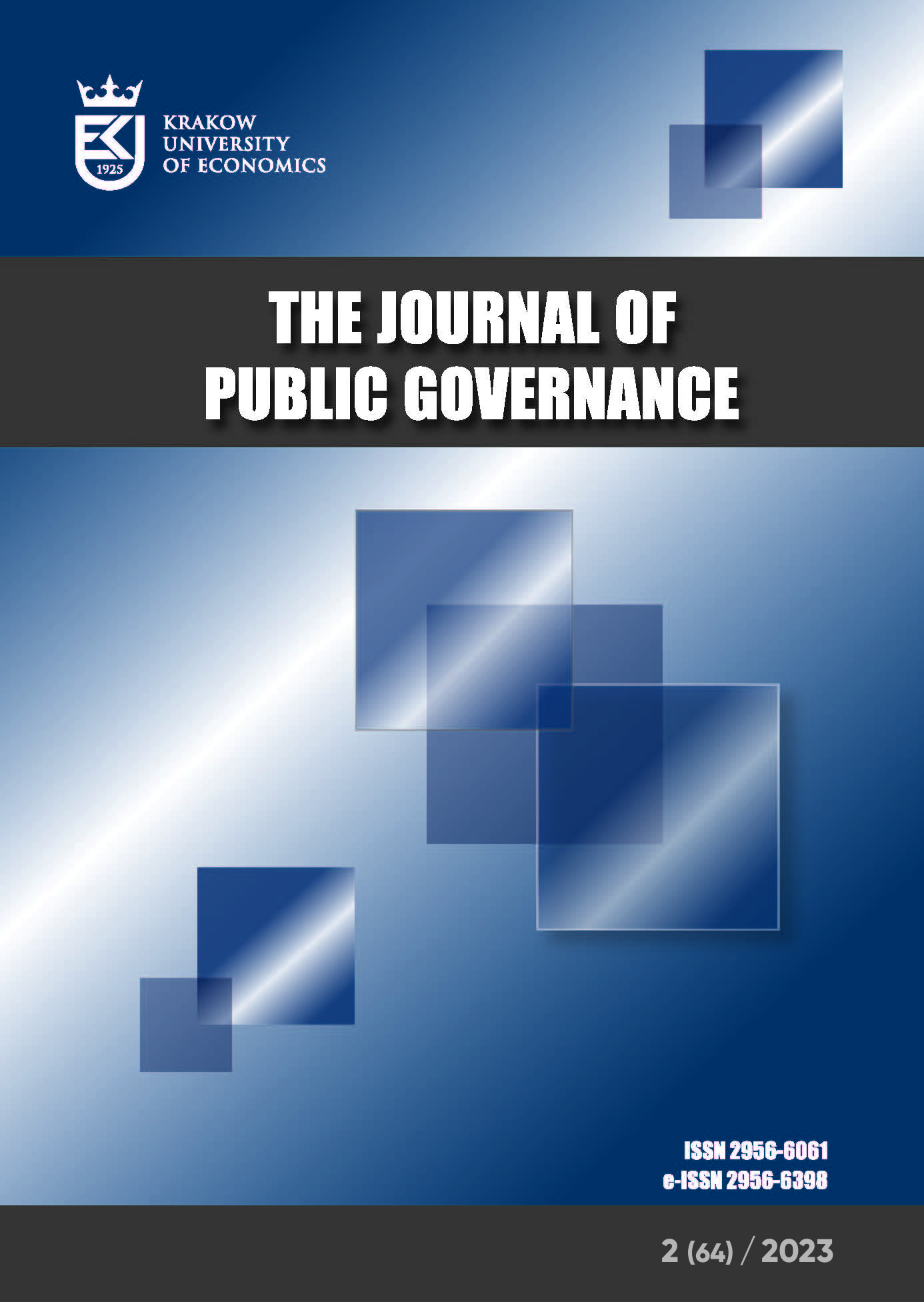City and Water: The Problem of Trauma in the Process of Developing Urban Resilience
DOI:
https://doi.org/10.15678/ZP.2020.54.4.06Keywords:
city regeneration, urban resilience, river, blue-green infrastructure, collective traumaAbstract
Objectives: In the paper, the authors study the socio-cultural, spatial, and functional relationships of city and water in the context of the paradigm shift that is taking place in urban development.
Research Design & Methods: The following qualitative methods are used: field observation, participatory observations, transdisciplinary analyses, and case study.
Findings: The historical development processes and the resultant collective traumas that have developed in Gliwice were analysed. Some substantial links and correlations have been discovered.
Implications / Recommendations: In the sphere of the local cultural background, there are echoes of traumatic events which, to a large extent, have shaped subconscious beliefs and self-defence mechanisms. It is necessary to take this part of reality into consideration while working on city development plans.
Contribution / Value Added: The article illuminates the background and mechanisms of some of the processes shaping the relationship between the city and water. Collective traumas play a significant role in these processes, and the fundamental changes that are key to building urban resilience are strongly dependent on working on it attentively. The authors formulate the concept of a trauma network as a significant element of the urban system.
Article classification: research article
JEL classification: Y8 Related Disciplines
Downloads
References
Ataria, Y., Gurevitz, D., Pedaya, Ḥaviva, & Neria, Y. (Ed.). (2016). Interdisciplinary Handbook of Trauma and Culture. Springer.
Aydin, C. (2017). How to Forget the Unforgettable? On Collective Trauma, Cultural Identity, and Mnemotechnologies. Identity, 17(3), 125–137. https://doi.org/10.1080/15283488.2017.1340160.
Bielik-Robson, A. (1997). Na drugim brzegu nihilizmu: Filozofia współczesna w poszukiwaniu nowego podmiotu. IFiS PAN.
Bielik-Robson, A. (2016). Pamięć, czyli farmakon. Teksty Drugie, 6, 68–78. https://doi.org/10.18318/td.2016.6.5.
Biggs, R., Schlüter, M., & Schoon, M. L. (Eds.). (2015). Principles for Building Resilience: Sustaining Ecosystem Services in Social-Ecological Systems. Cambridge University Press.
Bugno-Janik, A., & Janik, M. (2012). Przerwana tożsamość? Gliwice: od miasta do technopolii – wstęp do studium przypadku. Zeszyty Naukowe Politechniki Poznańskiej. Architektura i Urbanistyka, 25, 49–55.
Cadenasso, M. L., Pickett, S. T. A., McGrath, B., & Marshall, V. (2013). Ecological Heterogeneity in Urban Ecosystems: Reconceptualized Land Cover Models as a Bridge to Urban Design. In W S. T. A. Pickett, M. L. Cadenasso, & B. McGrath (Eds.), Resilience in Ecology and Urban Design: Linking Theory and Practice for Sustainable Cities (pp. 107–129). Springer Netherlands. https://doi.org/10.1007/978-94-007-5341-9_6.
Coaffee, J., & Lee, P. (2016). Urban Resilience: Planning for Risk, Crisis and Uncertainty. Palgrave.
Czyżewski, A. (2009). Trzewia Lewiatana. Miasta-ogrody i narodziny przedmieścia kulturalnego. Państwowe Muzeum Etnograficzne w Warszawie.
Davies, N. (1998). Europe: A History. HaperCollins Publishers.
Genesis 1:28. (b.d.). Pobrano 20 czerwiec 2021, z https://www.biblehub.com/genesis/1-28.htm.
Herman, J. L. (2015). Trauma and Recovery (2015 edition). BasicBooks.
Hobsbawm, E. J. (1989). The Age of Empire, 1875ľ1914 (1st Vintage Books ed). Vintage.
Holling, C. S. (1973). Resilience and Stability of Ecological Systems. Annual Review of Ecology and Systematics, 4(1), 1–23. https://doi.org/10.1146/annurev.es.04.110173.000245.
Janik, M. (2016). Przestrzeń miasta jako otwarte muzeum. In W E. Nieroba & B. Cymbrowski (Eds.), Sfera publiczna-Przestrzeń-Muzeum: O zmieniającej się roli instytucji kultury (pp. 221–236). Wydawnictwo Uniwersytetu Opolskiego.
Kubicki, P. (2016). Wynajdywanie miejskości: Polska kwestia miejska z perspektywy długiego trwania. Zakład Wydawniczy „NOMOS”.
Kubit, B. (2010). Gliwiccy Kresowianie (1st edition). Muzeum w Gliwicach.
Leder, A. (2014). Prześniona rewolucja: Ćwiczenie z logiki historycznej (1st edition). Wydawnictwo Krytyki Politycznej.
Nassauer, J. I. (2012). Landscape as medium and method for synthesis in urban ecological design. Landscape and Urban Planning, 106(3), 221–229. https://doi.org/10.1016/j.landurbplan.2012.03.014.
Nyka, L. (2013). Architektura i woda. Przekraczanie granic. Wydawnictwo Politechniki Gdańskiej.
Obschonka, M., Stuetzer, M., Rentfrow, P. J., Shaw-Taylor, L., Satchell, M., Silbereisen, R. K., Potter, J., & Gosling, S. D. (2018). In the shadow of coal: How Large-Scale Industries Contributed to Present-Day Regional Differences in Personality and Well-Being. Journal of Personality and Social Psychology, 115(5), 903–927. https://doi.org/10.1037/pspp0000175.
Purchla, J. (2017). Dziedzictwo kulturowe. In J. Hausner & A. Karwińska, Kultura a rozwój (pp. 37–60). Wydawnictwo Nieoczywiste – GAB Media: Fundacja Gospodarki i Administracji Publicznej.
Rockström, J., Steffen, W., Noone, K., Persson, Å., Chapin, F. S. I., Lambin, E., Lenton, T., Scheffer, M., Folke, C., Schellnhuber, H. J., Nykvist, B., de Wit, C., Hughes, T., van der Leeuw, S., Rodhe, H., Sörlin, S., Snyder, P., Costanza, R., Svedin, U., … Foley, J. (2009). Planetary Boundaries: Exploring the Safe Operating Space for Humanity. Ecology and Society, 14(2) art.32. https://doi.org/10.5751/ES-03180-140232.
Rozmowa z prof Andrzejem Lederem. (2017, kwiecień 12). https://youtu.be/XBW5HQ3UzDY.
Seeburger, F. (2016).Trauma of Philosophy In Y. Ataria, D. Gurevitz, Ḥaviva Pedaya, & Y. Neria (Eds.), Interdisciplinary Handbook of Trauma and Culture (pp. 163–179). Springer.
Sowa, J. (2011). Fantomowe ciało króla. Peryferyjne zmagania z nowoczesną formą. Towarzystwo Autorów i Wydawców Prac Naukowych „Universitas”.
Sowina, U. (2009). Woda i ludzie w mieście późnośredniowiecznym i wczesnonowożytnym. Ziemie polskie z Europą w tle. Instytut Archeologii i Etnologii RAN.
Szahaj, A. (2014). Kapitalizm drobnego druku. Instytut Wydawniczy Książka i Prasa.
Tracz, B. (2004). Rok ostatni--rok pierwszy. Gliwice 1945. Muzeum w Gliwicach.
White, L. (1967). The Historical Roots of Our Ecologic Crisis. Science, 155(3767), 1203–1207. https://doi.org/10.1126/science.155.3767.1203.
Yehuda, R. (2015, July 30). Rachel Yehuda – How Trauma and Resilience Cross Generations [interview], available at: https://onbeing.org/programs/rachel-yehuda-how-trauma-and-resilience-crossgenerations-nov2017/.
Yehuda, R., & Lehrner, A. (2018). Intergenerational Transmission of Trauma Effects: Putative Role of Epigenetic Mechanisms. World Psychiatry, 17(3), 243–257. https://doi.org/10.1002/wps.20568.
Zagajewski, A. (1991). Dwa miasta. Association Cahiers Littéraires.
Downloads
Published
How to Cite
Issue
Section
License
Open Access, licence: CC-BY 4.0




